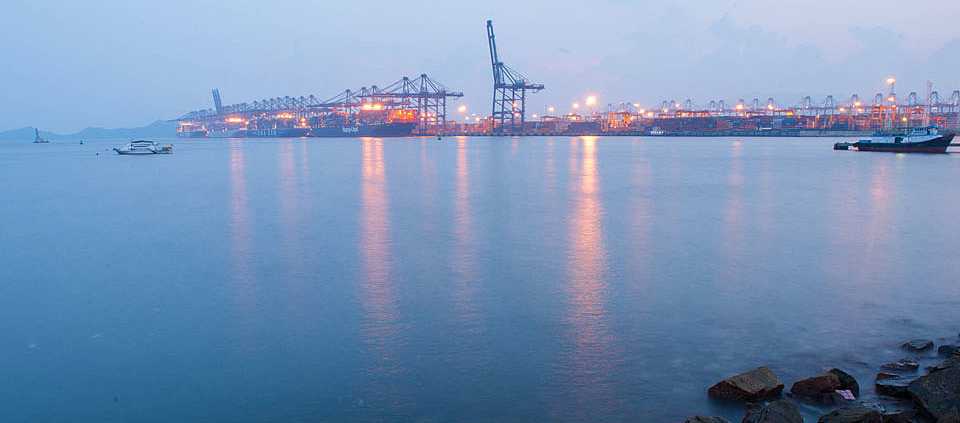Newsletter: Port crisis in southern China
There has been a recent surge in Covid 19 cases in Shenzhen, affecting the ports of Yantian and Shekou, as well as neighboring ports Guangzhou and the port of Nansha.
Below is also a translation of the current report from the DVZ:
“
The Suez Canal crisis has not yet been properly digested, but there are already signs of another massive disruption to maritime supply chains. Rising numbers of cases around the southern Chinese metropolis of Shenzhen are leading to severe handling bottlenecks in the ports of Yantian and Shekou as well as in Nansha (in neighbouring Guangzhou). Maersk is talking about delays of up to 14 days. Delivery stops and restrictions for export cargo as well as cancelled ship calls are the order of the day. It is therefore only a matter of time before the wave reaches the ports in Northern Europe. German seaport freight forwarders are therefore already alarmed.
With regard to the situation in China, Frank Huster, Managing Director of the German Freight Forwarding and Logistics Association (DSLV), said at the association's annual press conference on Thursday morning: "We are concerned about this." No data has yet been received that there is a problem. But if the problem continues to develop, there could be another setback in the supply chains.
Lars Jensen, CEO and partner of the consultancy firm Vespucci Maritime, fears that the situation will escalate further. He estimates that the impact will exceed that of the Suez crisis. According to him, Maersk is already referring to 64 ships from the 2M alliance that have to avoid the ports of Yantian and Shekou. One refers to 52 ships from THE Alliance. OOCL cites 26 units and CMA CGM 11 that are affected.
Ship delays at Yantian Port, a deep-water harbour in Shenzhen, have worsened over the past week, according to Project44. Based on its container dwell time data, the US-based supply chain platform provider expects the port to remain congested throughout the month. According to the data, dwell times in Yantian fluctuate greatly. The minimum is one day. The median, i.e. the measured value that lies exactly in the middle of all the individual data, is given by Project44 as almost 18 days for containers waiting to be loaded (as at 7 June).
Die Behörden in Guangzhou, der Industriestadt nordwestlich von Shenzhen, haben ebenfalls Einschränkungen der Geschäftstätigkeit verhängt. „Der Nansha-Hafen wird die Auswirkungen dieser Beschränkungen ebenfalls zu spüren bekommen, was die Stau-Problematik in Yantian weiter verschärft“, teilt Project44 weiter mit. Mit Stand vom 7. Juni nähern sich den Experten zufolge 47 Schiffe dem Hafen Yantian. Der Analyse zufolge sind bereits ein Drittel der Schiffe verspätet.
"The recent rise in Covid-19 cases in China has led to a shutdown that could drive the already record-breaking cost of shipping goods from China even higher," says Josh Brazil, responsible for marketing at Project44. According to the company, freight costs between China and the US West Coast rose 156 percent last year, while the trade lane between China and the US East Coast saw an increase of 162 percent. Freight prices between China and Northern Europe rose the most, by 535 percent.
Tense situation intensifies
The German Association of Materials Management, Purchasing and Logistics (BME) in Eschborn is concerned about this development. "The pandemic has not yet been defeated and we will have to live with coronavirus for some time to come," says Carsten Knauer, Head of Logistics/SCM at the BME. Further delays or failures in the supply chains will impair the already tense situation on the transport markets. "In the short term, it is hardly possible to find alternative routes for transport from China. Trucks, rail and air freight are already working at full capacity," Knauer continues. The BME continues to advise establishing suppliers in additional markets and regions in the medium and long term in order to diversify the risk of cancellations or delays.
The obstruction will mean additional empty sailings from Yantian to Hong Kong and the US West Coast in June, Project44 predicts. The port's container capacity could be reduced by around 50 percent and there could be restrictions on shipping companies being allowed to release high-value shipping containers. For the trade routes between Asia and Europe, shipping companies have announced that they will no longer call at ports in the north, such as Tianjin and Quindao, citing congestion problems as the reason.
Difficult planning for importers
Nathan Resnick, CEO of the US B2B procurement platform Sourcify, told business channel CNBC that supply chains have been severely impacted by the sudden and severe restrictions. He added that the situation would make it difficult for companies to plan ahead in the coming quarters. "Especially with the holiday season coming up, many large importers are trying to plan their supply chain for Q3 and Q4." When asked which industries are likely to be most affected, he replied: "At the moment in Guangzhou and Guangdong, it is mainly household goods, footwear, consumer electronics and many other types of products." He continued: "These delays at the ports will lead to a further increase in freight rates and this is something we see continuously throughout the year."
The shipping movement data up to the end of May already indicate a slight drop in China's imports and exports compared to the previous month. TheKiel Trade Indicatorof the Kiel Institute for the World Economy (IfW) shows a negative sign for both exports (minus 1.7 percent) and imports (minus 1.0 percent). Vincent Stamer, head of the leading indicator for global trade, said on enquiry that it is not yet possible to make any further statements. He refers to the next update of the figures on 22 June. (sr/cs/rok)
“
If you have any questions or require individual coordination, the Dörrenhaus team is always happy to help.
Your Dörrenhaus team



